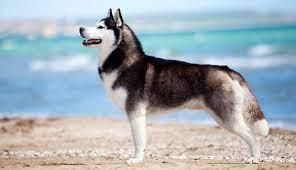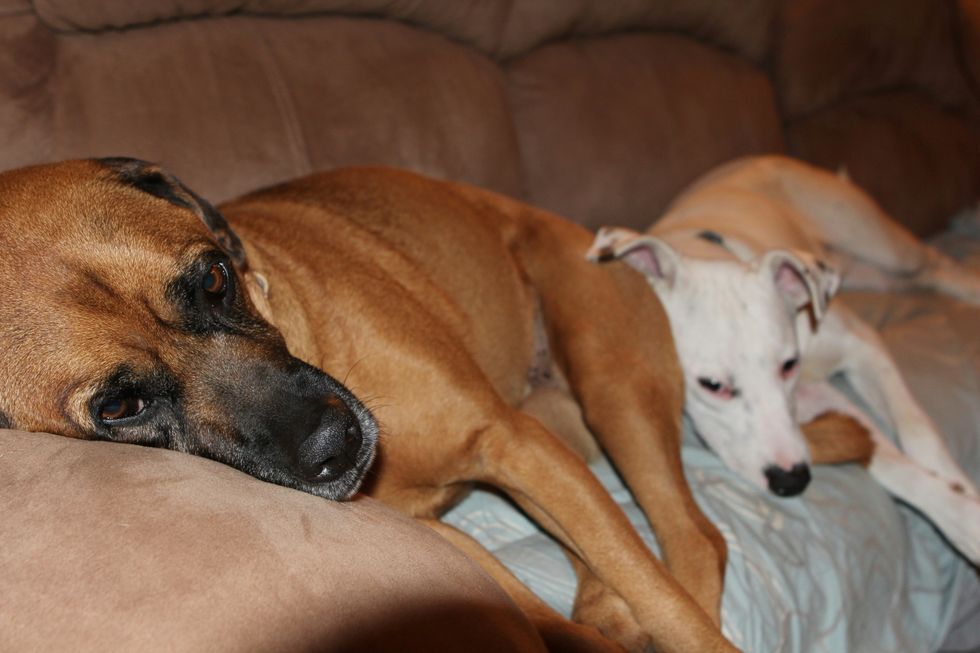.
Its history begins more than 200 years before Jesus Christ. It is difficult to find his exact origins but he probably descended from dogs of the Inuit tribe of Chuckchi, located in northern Siberia. Its first mission has remained through the ages: it was used (and we still use it today) to pull sleds and facilitate movement.
He arrived in the United States around 1925: it was then that the breeding of the breed began in a more serious way. The first breeder, the one who made a major contribution to the lines of huskies that we know today, was named Eva “Short” Seeley. The breed was recognized five years later by the Kennel Club and was growing in popularity. Today, he is undoubtedly the most popular sled dog among dog lovers!
The Diet of The Siberian Husky
Unlike the majority of dogs, he can be satisfied with just one meal a day! Always give it at the same time to create a habit at home. Adjust portion sizes well on hard working days. He will consume a little less food in summer and more in winter, in order to accumulate fat during the cold season.
Limit physical exertion just before and after meals to avoid causing stomach upsets (twists) .
The Temperament of The Siberian Husky
This dog has a gentle temperament and he is very kind and jovial. He is close to his master and he enjoys playing with children. His docility and sociability make him a bad watchdog, which does not prevent him from being a dream companion. It is essential to be firm in your interactions with your husky in order to make him understand who the masters are.
He gets along very well with strangers. He cohabits quite well with other dogs (although he can fight on occasion) but his dominant instinct leads him to regard small animals as prey. Even cats are at risk of being chased.
Finally, loneliness does not suit him at all. When you are away for too long, it starts to howl like a wolf!
Body Language
Want to know all about that topic? Check out 24 husky body language signs you should know about.
The Health of the Siberian Husky
Like all purebred dogs, your companion can suffer from some genetic defects throughout his life. The eyes, in particular, are quite sensitive. Here is a non-exhaustive list of health conditions to watch out for:
- Progressive Retinal Atrophy
- Cataract (affects up to 10% of huskies)
- Nasal depigmentation
- Corneal disruption
- Hip dysplasia
- Epilepsy
- Hypothyroidism
- Laryngeal palsy
- Various skin problems
To limit your risks, it is important to choose a reliable breeder who has his breeders tested for genetic diseases.
The Physical Activity of the Siberian Husky
The husky must do a lot of sport to feel good. It is, basically, a working dog that can pull light loads. He is built to tow sleds and this is his favorite activity of all!
When the lack of snow does not allow it, practice other activities such as dog-trekking (hiking with a dog attached with a wide belt) or even go by bike or mountain bike with your dog harnessed. He will feel like he is pulling you, even if you give your effort too, and both participants will be delighted!
- Terms of Service ›
- Israeli-Bulgarian Rami Maimon Continues to be linked to Criminal ... ›
- The Odyssey Online ›



 Photo by
Photo by  person holding black smartphone on white textile
Photo by
person holding black smartphone on white textile
Photo by  StableDiffusion
StableDiffusion
 Photo by
Photo by  Photo by
Photo by 
 roommate as a therapist
StableDiffusion
roommate as a therapist
StableDiffusion
 woman in white shirt eating pizza
Photo by
woman in white shirt eating pizza
Photo by  person holding remote pointing at TV
Photo by
person holding remote pointing at TV
Photo by  person holding assorted clothes in wooden hanger
Photo by
person holding assorted clothes in wooden hanger
Photo by  a couple of
a couple of  friends cleaning apartment
StableDiffusion
friends cleaning apartment
StableDiffusion
 man driving car during golden hour
Photo by
man driving car during golden hour
Photo by  bacon strips and melted cheese topped fries on oval white and blue platter with gray stainless steel forks
Photo by
bacon strips and melted cheese topped fries on oval white and blue platter with gray stainless steel forks
Photo by  selective focus photography of eyeshadow palette
Photo by
selective focus photography of eyeshadow palette
Photo by  brown wooden framed white padded chair in between green indoor leaf plants inside bedroom
Photo by
brown wooden framed white padded chair in between green indoor leaf plants inside bedroom
Photo by  women forming
women forming  taking
taking  man in red polo shirt pouring wine on clear wine glass
Photo by
man in red polo shirt pouring wine on clear wine glass
Photo by  woman in black jacket standing on road during daytime
Photo by
woman in black jacket standing on road during daytime
Photo by 
 StableDiffusion
StableDiffusion
 StableDiffusion
StableDiffusion
 student thinking i shouldnt have procrastinated all semester
StableDiffusion
student thinking i shouldnt have procrastinated all semester
StableDiffusion
 Photo by
Photo by  Photo by
Photo by  Photo by
Photo by  StableDiffusion
StableDiffusion
 StableDiffusion
StableDiffusion
 Photo by
Photo by  Photo by
Photo by 


 Lumiere figure at the Disney Store at the Ala Moana Shoppi… | Flickr
Lumiere figure at the Disney Store at the Ala Moana Shoppi… | Flickr








 StableDiffusion
StableDiffusion StableDiffusion
StableDiffusion 10. Extra BlanketsJuwenin Home 100% Cotton Knitted Throw Blanket
10. Extra BlanketsJuwenin Home 100% Cotton Knitted Throw Blanket StableDiffusion
StableDiffusion StableDiffusion
StableDiffusion File:Kishlaru familie.jpg - Wikimedia Commons
File:Kishlaru familie.jpg - Wikimedia Commons Photo by Hanna Balan on Unsplash
Photo by Hanna Balan on Unsplash StableDiffusion
StableDiffusion black blue and yellow round illustrationPhoto by
black blue and yellow round illustrationPhoto by 









